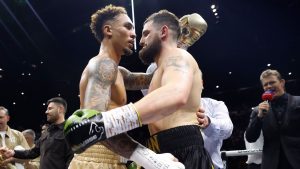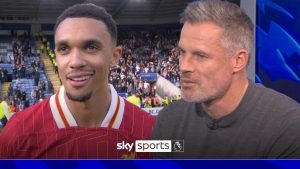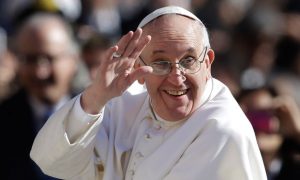What will the rise of the G League mean for basketball going forward?


In 2006, the NBA put an end to high school players foregoing college to enter the draft, and college basketball immediately reaped the rewards.
However, 14 years later, the NBA has created an alternative in the form of the League.
The G League began its life as the National Basketball Development League in 2001, before becoming the NBA D-League in 2005. In 2017, it underwent a final name change to the present G League. To that point, salaries were often in the $20,000 to $40,000 range, with a league average of $35,000. But in 2018, the G League added what it called “Select Contracts,” allowing certain prospects to earn $125,000 per season.
And this month, the G League announced it would begin signing some of basketball’s tip-top prospects to deals far outpacing even those Select contracts. Within weeks, that change has turned the G League into a viable option for elite high school players to prepare for the NBA, considering the nation’s No. 1 high school prospect Jalen Green opted to take the leap into the NBA’s developmental system.
Jalen Green, potential No. 1 pick in 2021 NBA draft, says he is bypassing college and signing in the NBA G League.
— Shams Charania (@ShamsCharania) April 16, 2020
Green isn’t alone in making the game-changing jump to the G-League. Fellow 5-star prospects Daishen Nix and Isaiah Todd also decided to make the leap to the NBA’s farm system.
Nix announced his decision to de-commit from UCLA on Tuesday.
Nation’s No. 1 PG Daishen Nix decommits from UCLA and plans to sign with the G League, per @ShamsCharania
He joins Jalen Green and Isaiah Todd on the new team in Southern California @brhoops pic.twitter.com/0btYUdLnOx
— Bleacher Report (@BleacherReport) April 28, 2020
Green, Todd and Nix will each receive contracts eclipsing $200,000 – Green’s contract will eclipse $1 million total. In addition, each will receive college scholarships should they choose to go back to school in the future. They won’t join existing G League teams, but will instead reportedly form a “Select Team” that will scrimmage against other high-level competition.
G League deal for Daishen Nix — arguably the best point guard in the 2021 NBA draft — is expected to be in the $300,000 range, sources said. https://t.co/V96P84WInb
— Shams Charania (@ShamsCharania) April 28, 2020
With Green, Todd and Nix in mind, the conversation regarding what effect the G-League will have on college basketball — and the overall sport — has amplified this week.
Will schools continue to land top players in the midst of the NBA’s investment in the G-League? How will the prospect of another option affect players’ decisions? Will the landscape change drastically?
Marcellus Wiley, for one, believes the G-League’s new developmental pathway is a huge win for the NBA and for elite players, and that it won’t drastically affect college basketball, considering most freshmen don’t carry their teams deep into the NCAA tournament while in college.
“These guys’ hype is being suppressed more than ever. Who goes into the tournament and wins them as of late? The Villanovas, the Virginias … Teams with 3- or 4-year starters on them. Those are not the best prospects.”
.@MarcellusWiley believes the G League’s development program is great for the NBA
“You’re saying that Zion Williamson was made at Duke or really benefited, I’m here to say in a parallel universe it would’ve been the same impact if he didn’t go to Duke.” pic.twitter.com/VJhdU5DwYo
— Speak For Yourself (@SFY) April 29, 2020
One of the more popular faces in the college game, Auburn head coach Bruce Pearl – who missed out on Green – has his own opinion on the G-League’s ascension. He believes both that players should be able to go to the NBA out of high school and that college basketball will still stand tall like it has in the past.
“This will have some impact, but college basketball survived without some of the greatest pros of all-time, like Kevin Garnett, or Moses Malone, or even LeBron. We’re going to survive … Jalen Green had the choice of Memphis, Auburn, or $500,000 from the G-League. It was a pretty good deal.”
“I still think college is the way to go. Zion Williamson from Duke, first pick by the New Orleans Pelicans, that’s a lot more exciting than the first pick coming from the Maine Lobsters.”
Bruce Pearl doesn’t think the G League Pathway Program spells the end for NCAA basketball. pic.twitter.com/AU4FjHMv2S
— Get Up (@GetUpESPN) April 30, 2020
Even though Todd, Nix and Green will presumably serve as examples of successfully taking alternate pathways to the NBA, there are also those that view the G-League from a different perspective.
Yes, young men will be paid handsomely, and yes, they will potentially be one step closer to playing professionally. But according to Jason Whitlock, if guys don’t become visible stars in college, the popularity of the NBA is subject to shrink, considering they won’t have college fanbases following them into the NBA.
“The NBA is not as popular as it used to be, the further and further it gets away from having college basketball stars come into their sport … True superstars need to join the NBA and help grow the lead.”
.@WhitlockJason believes allowing high school prospects to skip college for the G League’s development program is bad for the NBA
“The league hasn’t been as popular since Michael Jordan left & we can hype LeBron James but he doesn’t compare to the stars of yesteryear.” pic.twitter.com/DGzYWPxP07
— Speak For Yourself (@SFY) April 29, 2020
Kentucky head coach John Calipari believes the G-League will be detrimental to not only the NBA, but to those who aspire to make it to the NBA and won’t realize that the G-League isn’t the path for everyone.
“My issue with the G-League trying to entice players by giving them more money, is not the kids that you’re getting,” Calipari said Monday during his weekly “Coffee with Cal” web show featuring guest Charles Barkley. “It’s the thousands of ninth and 10th graders that think that’s how they’re going to make it, when you and I know it’s going to be 2%. We’re not talking 50. It will be thousands and thousands and thousands.”
And while Jay Bilas agrees college basketball will be fine with the G-League pathway, he’s not sure survival is enough:
The G League is good business for the NBA. The question for the NCAA is, “Do we believe in education?” If we do, we should encourage and incentivize college, even if only for a year or two, initially. Lifelong education doesn’t require four consecutive years. pic.twitter.com/uM654g6OG2
— Jay Bilas (@JayBilas) April 30, 2020
“It will diminish college basketball. I’m not like those who say it’s doomsday around the corner … College basketball will be fine. But I don’t think college basketball wants to be just fine … Some say, ‘We survived without LeBron James and survived without Kobe Bryant,’ … Yeah, we survived, but it would be better if you had them play in college.”
So, what’s next? As Bilas said, the NCAA’s rules on players receiving compensation could be a factor moving forward, as well. For years, part of the debate has revolved around the NCAA potentially paying players or allowing players to profit off their likeness off the court. If that were the case, maybe players would be more prone to go to college and potentially stay longer.
We learned this week that the NCAA seems to be headed in that direction.
Board of Governors moves toward allowing student-athlete compensation for endorsements and promotions: https://t.co/rzWzPt8KlI pic.twitter.com/bH9VoczjMr
— NCAA (@NCAA) April 29, 2020
It remains to be seen what the results of the new G-League developmental path will be, or how allowing college players to get paid for their likenesses might affect the larger ecosystem.
What we do know is all eyes will be on Green, Todd and Nix in the coming months.
Jalen Green, Daishen Nix, Isaiah Todd, and whoever else joins the G League pathway program will go beneath one of the more unique microscopes in recent years https://t.co/4pTqXFjBoE
— The Crossover (@TheCrossover) April 30, 2020
How they fare could define the NBA pipeline for decades to come.






